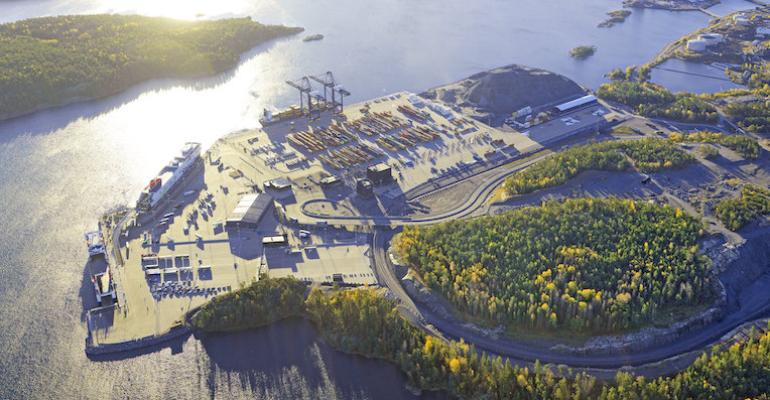The project will assess scope to build an interim carbon dioxide storage facility at Stockholm Norvik Port.
The project, known as Norvik Infrastructure CCS East Sweden (NICE), is aimed at increasing options for emissions reduction and negative emissions with a sustainable and cost-efficient facility in eastern Sweden, according to a statement from Ports of Stockholm. An arrangement for transporting carbon dioxide between facilities that create emissions to the end-capture site would assist the country in achieving its environmental goals, the port company said.
Ports of Stockholm chairperson of the Board, Clara Lindblom, declared: “Stockholm Norvik Port has large potential to become a carbon dioxide hub. The proposed transport solution would be able to handle a significant proportion of the carbon dioxide transport from Sweden, potentially around nine million tonnes per year, with a potential to become the largest of all similar projects in Sweden.”
The study is the latest Nordic initiative in the rapidly developing CCS sector. Last week, Lloyd’s Register announced that it had issued an Approval in Principle to Rotoboost. The Norwegian hydrogen technology firm has developed a carbon capture system, Rotobox, for LNG carriers and other LNG-fuelled ships.
The technology uses a thermocatalytic decomposition (TCD) process to convert part of the natural gas fuel supply into hydrogen and graphite with a liquid catalyst. The process reduces emissions of carbon dioxide and particulates and cuts methane slip by producing hydrogen and capturing carbon in solid form. The hydrogen could potentially be used for fuel cells or as a blend-in fuel for combustion engines or gas-fired boilers.
The feasibility study will be undertaken in collaboration with Heidelberg Materials, Mälarenergi, Nordkalk, Plagazi, Söderenergi, Stockholm Exergi, and Vatenfall.
Copyright © 2024. All rights reserved. Seatrade, a trading name of Informa Markets (UK) Limited.
Add Seatrade Maritime News to your Google News feed.  |

